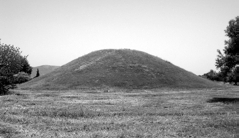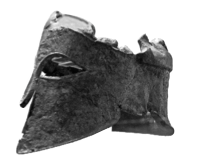[continued from page 1]
These men assumed that their readers would always be familiar with
many elements of ancient Mediterranean life about which they wrote
and in which they lived, so they provided little explanation,
elaboration, or background description on what, to their ancient
readers, would have been common and familiar aspects of life, but
which today have become long-dead and forgotten customs and
practices. The geography they describe has in some instances changed
substantially over the centuries, and many of the cities and sites which
figure in their narratives have disappeared or now exist under
different names (which renders most modern maps useless and in
some cases deceptive). Military tactics, religious rites, and political
rules of ancient Greece are complete mysteries to current readers, who
know nothing of ancient Mediterranean slavery, warships powered by
oars, the role of animal sacrifices in pagan religious rituals, or the
rules and procedures of ancient Greek political institutions.
many elements of ancient Mediterranean life about which they wrote
and in which they lived, so they provided little explanation,
elaboration, or background description on what, to their ancient
readers, would have been common and familiar aspects of life, but
which today have become long-dead and forgotten customs and
practices. The geography they describe has in some instances changed
substantially over the centuries, and many of the cities and sites which
figure in their narratives have disappeared or now exist under
different names (which renders most modern maps useless and in
some cases deceptive). Military tactics, religious rites, and political
rules of ancient Greece are complete mysteries to current readers, who
know nothing of ancient Mediterranean slavery, warships powered by
oars, the role of animal sacrifices in pagan religious rituals, or the
rules and procedures of ancient Greek political institutions.
Unfortunately, current editions of their historical works, although
they may present skillful translations from the Greek, make little
attempt to provide sufficient background information required now by
the general reader in order to comprehend these ancient texts. These
editions contain only a small number of often inadequate maps, sparse
indexes, incomplete (and sometimes incorrect) chronologies, and few
if any helpful appendices. There are exceptions to this blanket
criticism, but no editions I know of make concerted, systematic efforts
to inform the reader of the work’s general context, to explain what
some obscure but important elements of the text might mean, or even
to make clear where and when the events described take place.
they may present skillful translations from the Greek, make little
attempt to provide sufficient background information required now by
the general reader in order to comprehend these ancient texts. These
editions contain only a small number of often inadequate maps, sparse
indexes, incomplete (and sometimes incorrect) chronologies, and few
if any helpful appendices. There are exceptions to this blanket
criticism, but no editions I know of make concerted, systematic efforts
to inform the reader of the work’s general context, to explain what
some obscure but important elements of the text might mean, or even
to make clear where and when the events described take place.
Copyright © 2010 by Robert B. Strassler
A Letter from the Editor

Tumulus at Marathon, Greece

Miltiades’ helmet inscribed with his name
In Print
Forthcoming

